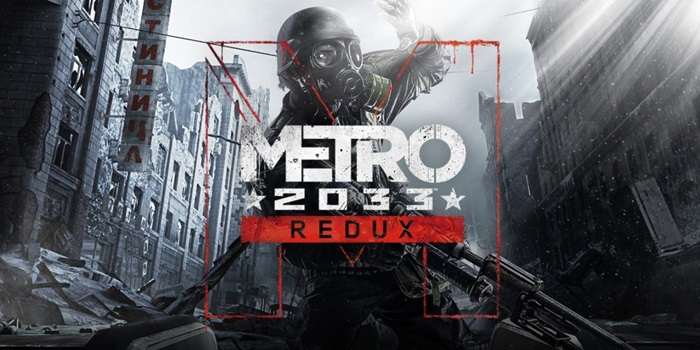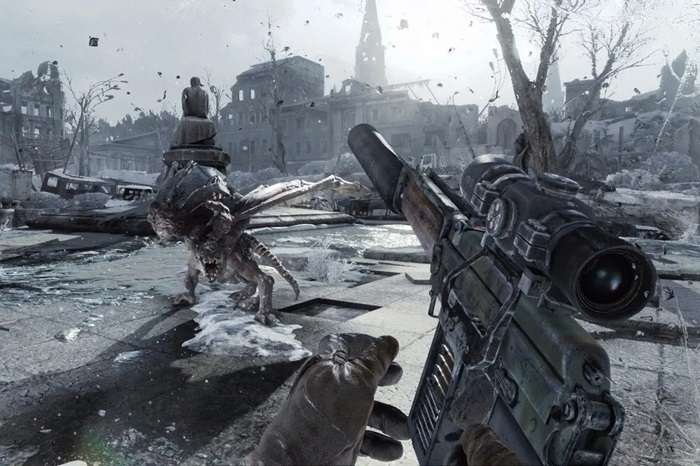The Metro game series, set in a post-apocalyptic world, is an immersive first-person shooter that combines survival horror, action, and deep narrative. Based on Dmitry Glukhovsky’s novels, this franchise has captivated gamers worldwide with its atmospheric gameplay, intense combat, and rich storylines.
If you’re new to the series or just looking for a refresher, this guide will break down the Metro games in order, exploring their plots, gameplay mechanics, and how each game connects within the series.
Table of Contents
- Introduction to the Metro Universe
- Metro 2033 (2010)
- Storyline Overview
- Gameplay Features
- Metro: Last Light (2013)
- Storyline Continuation
- Improved Mechanics and Graphics
- Metro Redux (2014)
- A Complete Remaster
- Differences Between Original and Redux
- Metro Exodus (2019)
- A New Direction for the Series
- Open World Exploration
- Metro Spin-Offs and Future Titles
- Potential Spin-Offs
- Rumors of Future Releases
- Metro’s Legacy and Impact on Gaming
- Conclusion: The Evolution of the Metro Series
Introduction to the Metro Universe
The Metro series, developed by 4A Games and published by Deep Silver, is deeply rooted in Russian post-apocalyptic fiction. The games are set in the aftermath of a nuclear war that has left much of the surface world uninhabitable, forcing survivors to live in underground metro systems.
The central theme of the series revolves around survival in harsh, unforgiving environments. Each game focuses on the journey of Artyom, the main protagonist, as he navigates this dystopian world filled with mutated creatures, hostile human factions, and the constant threat of radiation.
What makes the Metro series stand out is its unique blend of action, stealth, and narrative. While the games feature traditional first-person shooter mechanics, there is a strong emphasis on exploration, scavenging for resources, and carefully managing limited supplies. With a deep, immersive storyline, each entry in the series brings players deeper into this bleak yet captivating world.
Metro 2033 (2010)

Storyline Overview
Metro 2033, released in 2010, is the game that started it all. Based directly on Dmitry Glukhovsky’s novel of the same name, the game is set in the year 2033 in post-apocalyptic Moscow. After a devastating nuclear war, the survivors live in the tunnels of the Moscow Metro, the last bastion of humanity. The surface is uninhabitable, and what remains of civilization is threatened by mutated beasts and deadly radiation.
The protagonist, Artyom, is a young man raised in this underground world. The game’s story kicks off when Artyom is tasked with delivering a message to a distant Metro station regarding a new and terrifying threat—the Dark Ones. These mysterious beings appear to be attacking the last human outposts, and it’s up to Artyom to find a way to stop them.
Gameplay Features
Metro 2033 mixes traditional FPS mechanics with a heavy focus on atmosphere and survival. Resources are scarce, especially ammunition, which doubles as currency in the Metro. The game pushes players to make strategic decisions, such as whether to use precious bullets in combat or save them for trade. Stealth is often the best option, as direct confrontations with both mutants and human enemies can quickly drain your resources.
Key gameplay features include:
- Limited resources: Every bullet counts, and scavenging is essential for survival.
- Gas masks and filters: The surface is toxic, and you’ll need to manage your gas mask and air filters to stay alive.
- Branching storylines: Player decisions impact the narrative, leading to multiple endings.
Metro: Last Light (2013)
Storyline Continuation
Metro: Last Light continues Artyom’s story, taking place shortly after the events of Metro 2033. This time, Artyom must navigate the complex political landscape of the Metro as various factions—such as the Red Line and the Fourth Reich—vie for control of D6, a massive underground bunker with incredible resources.
The Dark Ones also play a crucial role in the story, as Artyom grapples with the consequences of his previous actions and their potential impact on the survival of humanity. Last Light further explores the moral dilemmas and human cost of survival in this brutal world.
Improved Mechanics and Graphics
Metro: Last Light built upon the foundations of Metro 2033, with significant improvements in both gameplay mechanics and graphics. The stealth system was refined, making it easier for players to navigate the world without being detected by enemies. Combat was also made smoother, with more responsive controls and a wider variety of weapons.
Some key improvements include:
- Enhanced stealth mechanics: Players have more tools at their disposal to silently take down enemies or avoid them altogether.
- Dynamic weather: Outdoor environments feature realistic weather patterns that affect visibility and gameplay.
- Expanded story: Last Light delves deeper into the political struggles of the Metro, with more nuanced characters and storylines.
Metro Redux (2014)
A Complete Remaster
Metro Redux was released in 2014 as a remastered collection of both Metro 2033 and Metro: Last Light. While it didn’t add any new content to the games, it did offer substantial improvements in terms of visuals and gameplay mechanics.
Metro 2033, in particular, saw the most significant upgrades. The Redux version of the game was rebuilt using the engine from Metro: Last Light, meaning it benefited from the same improved mechanics, lighting, and overall polish. Both games also received new difficulty modes, catering to players who wanted a more challenging experience.
Differences Between Original and Redux
The key differences between the original Metro games and their Redux versions include:
- Improved graphics: Lighting, textures, and character models were all enhanced for the Redux release.
- Better gameplay mechanics: The stealth and combat systems were refined, making the gameplay more fluid and intuitive.
- New game modes: Redux introduced Survival and Spartan modes, allowing players to choose between a more hardcore survival experience or a more action-oriented style of play.
Metro Exodus (2019)
A New Direction for the Series
Metro Exodus, released in 2019, marked a significant departure from the linear structure of the previous games. While it retained many of the core elements that made the series great—such as resource management, stealth, and a strong narrative—Exodus introduced open-world elements, allowing players to explore vast, semi-open environments outside of the Metro system.
The story follows Artyom as he leads a group of survivors on a journey across Russia in search of a new home. For the first time in the series, players spend a significant amount of time on the surface, traveling through various environments that showcase the devastation left by the nuclear war.
Open World Exploration
Metro Exodus is broken into several large, open areas that players can explore at their own pace. Each area features a mix of main story missions and optional side quests, encouraging exploration and discovery. While the surface is still dangerous—radiation, mutants, and hostile human factions abound—it offers a refreshing change of pace from the claustrophobic tunnels of the earlier games.
Notable gameplay features include:
- Open-world design: Large, semi-open environments encourage exploration and give players more freedom than ever before.
- Dynamic seasons: The game’s story unfolds over a year, and players experience different weather conditions, such as snow, rain, and extreme heat.
- Crafting system: Exodus introduces a crafting system that allows players to create and upgrade weapons and equipment from scavenged materials.
Metro Spin-Offs and Future Titles

Potential Spin-Offs
As of now, there haven’t been any official spin-offs from the core Metro series. However, the world of Metro is vast, with plenty of potential for spin-offs or side stories that explore different characters or locations within the universe. Fans have long speculated about the possibility of a multiplayer-focused game or a title that delves deeper into the Metro’s various factions.
Rumors of Future Releases
While 4A Games has not officially announced the next Metro title, rumors and speculation abound. The developers have hinted that they are working on a new project within the Metro universe, possibly expanding on the open-world elements introduced in Exodus. Fans are eagerly awaiting any news about what comes next for Artyom and the survivors of the Metro.
Metro’s Legacy and Impact on Gaming
The Metro series has left a lasting legacy in the gaming industry. Its unique blend of survival horror, deep narrative, and atmospheric world-building has influenced many other games in the genre. Metro’s emphasis on resource management, stealth, and immersive storytelling set it apart from more traditional first-person shooters, and its success has paved the way for more story-driven games with complex characters and moral dilemmas.
Moreover, Metro’s depiction of a bleak, post-apocalyptic world has resonated with players worldwide. The game’s themes of survival, hope, and the struggle for humanity in the face of overwhelming odds are universal, making it one of the most emotionally engaging series in modern gaming.
Related Post:
Exploring “Run 3 Unblocked Games”: A Cosmic Adventure
The Ultimate Guide to Tomb Raider Games in Order: A Journey Through Lara Croft’s Legacy
The Cast of Love Island Games: Meet the Vibrant Personalities Behind the Show
The Metro series has evolved significantly since its debut in 2010. From the tightly packed tunnels of Metro 2033 to the vast, open landscapes of Metro Exodus, each game has built upon its predecessor, offering players more depth, more choices, and more ways to


